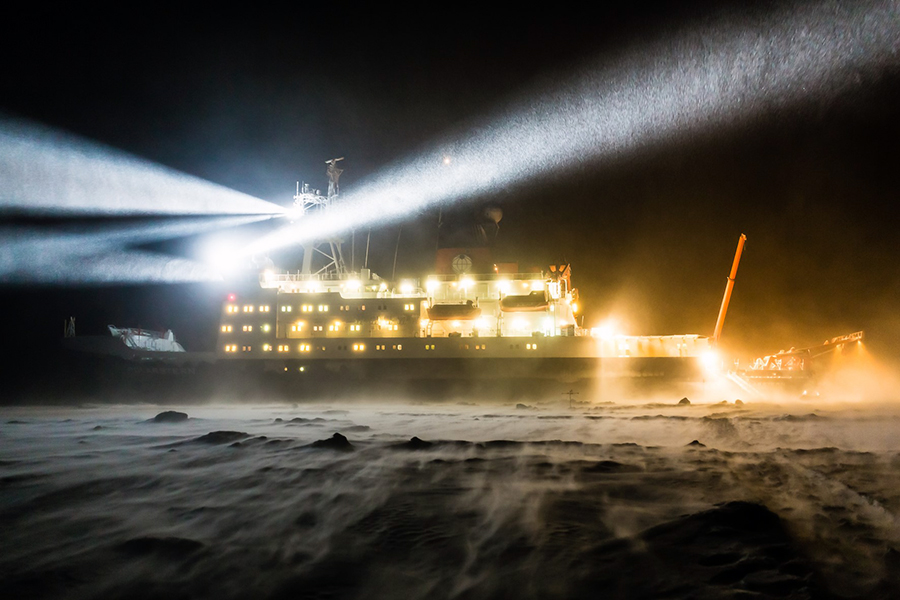
Photo by Stefan Hendriks.
In recent years researchers have discovered that algae in the oceans also produce compounds containing bromine. This production is related to photosynthesis, so it is generated by sunlight.
In a study published in the scientific journal Nature Communications, researchers at the University of Gothenburg describe how a previously unknown source of brominated compounds in the atmosphere has been detected in newly formed sea ice during the winter, even though there is little sunlight then.
“We have discovered this in Antarctica, the maritime area around the South Pole. Every year the sea ice that forms there during the winter melts during the summer to freeze again the following winter,” says the article’s lead author, Katarina Abrahamsson, a professor in the Department of Marine Sciences at the University of Gothenburg.
Sea ice adds bromine to the atmosphere
Their measurements of compounds containing bromine in sea ice, snow and air revealed that Antarctic winter ice added 10 times more bromine to the atmosphere than sea water does.
In addition, the researchers noted that winter ice contributed more bromine-containing compounds than summer ice. This means we need to change our view of how these compounds form, and the researchers suggest that chemical rather than biological processes predominate in the absence of sunlight.
In the study, the researchers used a global climate model. It showed that the brominated compounds produced during the winter spread throughout the southern hemisphere.
“We could estimate that bromine from sea ice amounted to a full 10 per cent of the atmospheric bromine in the world,” says Abrahamsson.
The ice surrounding the North Pole is beginning to resemble that around the South Pole
The researchers’ results also showed that sea ice, even during the dark period of the year, is an important source of atmospheric bromine. And that it affects the atmospheric cycle and climate in the entire southern hemisphere.
Ongoing climate change is making the ice in the Arctic increasingly similar to that around Antarctica. The Arctic is changing from freezing over for multiple years to one-year ice cycles.
“So our results probably can also be applied in the northern hemisphere,” says Abrahamsson.
Article in Nature Communications: “Organic bromine compounds produced in sea ice in Antarctic winter”
Contact:
Katarina Abrahamsson, professor in the Department of Marine Sciences, University of Gothenburg, phone: +46 (0)31-786 90 51, mobile: +46 (0)766-22-90 51, e-mail: katarina.abrahamsson@gu.se
Photo by Stefan Hendriks
